| Name | McIntyre Lacrimal Probe Cannula |
| Lead Time | Lead time advised within 48 hours of order placement. |
| Competitor | ;OP0903001;OP0903-001;E43953;E4395-3;601208;60-1208;E-4395-3;6012-08;OP0903002;OP0903-002;601209;60-1209;6012-09;6012-08_6012-09; |
| Specialty | Ophthalmology-Cannulas |
| Material Finish | Stainless Steel |
| Grade | Premium Operating Room |
| Units of Measurement | Each |
| Manufacturer | Medicrest Surgical Industries |
| Sterility | Non-Sterile |
| Usage | Reusable |
McIntyre Lacrimal Probe Cannula
2″ (5.0 cm), 23-gauge McIntyre Lacrimal Probe Cannula is an extremely useful tool in treating tear duct obstructions. The probe may be used to investigate blockage of lacrimal gland damage or more frequently, obstruction of the nasolacrimal duct. The slender profile of the cannula allows access to the small entrances of the duct. Both straight and curved models are available depending on surgical preference.
SKU:
MSI-05-1063
Category: Cannulas
Description
Reviews (0)
Be the first to review “McIntyre Lacrimal Probe Cannula” Cancel reply
Shipping & Delivery
Related products
Gills-Welsh Cannula
25-gauge, angled Gills-Welsh Cannula is a commonly used tool in cataract and various other ophthalmologic procedures. The small gauge of the cannula may be used to aspirate fluid in the anterior chamber of the eye following a limbal incision. Four different angles are available with the cannula depending on surgical preference.
Kelman Dipstick
Kratz Capsule Scraper
shaft w/ sharp top, shaft angled 60 degrees, 12.0 mm tip from angle to tip, 22-gauge, 1/2" Kratz Capusle Scraper is a useful tool in phacoemulsification procedures. The sandblasted tip is designed to scrape the surface of the posterior capsule to remove and cellular debris following aspiration of the nucleus.
Kratz Cystotome
30-gauge Kratz Cystotome is a commonly used tool during cataract phacoemulsification procedures. The cystotome may be used to create a circular incision in the anterior capsule before proceeding with aspiration of the lens. The sharp tip combined with 60 degree angled shaft allows for easy cutting and visualization.
Lacrimal Cannula
1.2" (3.1 cm) shaft w/ 2.0 cm reinforced, 23-gauge Lacrimal Cannula is an extremely useful tool in treating tear duct obstructions. The cannula may be used to investigate blockage of lacrimal gland damage or more frequently, obstruction of the nasolacrimal duct. The slender profile of the cannula allows access to the small entrances of the duct. Two different working lengths are available with the cannula depending on surgical preference.
Lieppman Cystotome
w/ guard, 22-gauge, 2" (5.0 cm)Lieppman Cystotome is a commonly used tool during cataract phacoemulsification procedures. The cystotome may be used to create a circular incision in the anterior capsule before proceeding with aspiration of the lens. The tool features a guard to prevent extraneous damage to the surrounding iris or globe tissue.
McIntyre-Binkhorst Irrigating Cannula
smooth blunt tip, front opening, 26-gauge McIntyre-Binkhorst Irrigating Cannula is a useful tool in cataract procedures. The curved tip of the cannula is used for loosing the peripheral cortex of the lens during difficult extraction. The cannula features a smaller gauge for easier access and a shorter working length for more control. Both right and left curvatures of the cannula are also available depending on surgical preference.
Randolph Cyclodialysis Cannula
front air injection port, 12.0 mm angled tip, 19-gauge Randolph Cyclodialysis Cannula is a commonly used tool in glaucoma procedures. The cannula is frequently used to irrigate the anterior chamber once a communication has been established between the anterior chamber and the suprachoroidial space. The cannula has a front injection air port and features a flat tip or thin spatula blade depending on surgical preference.

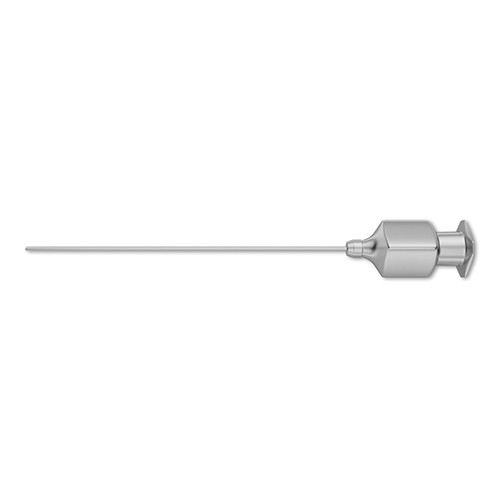
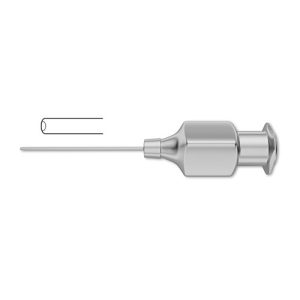
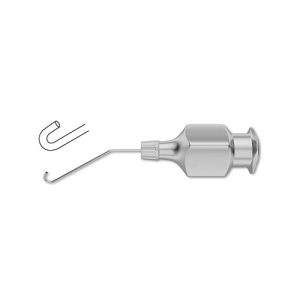
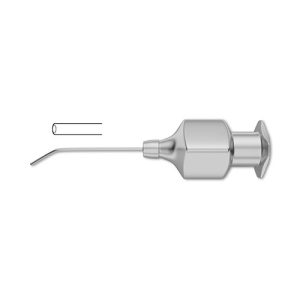


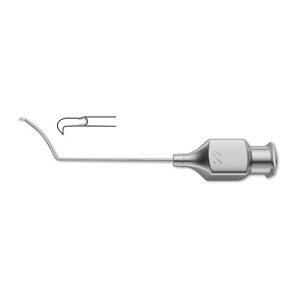
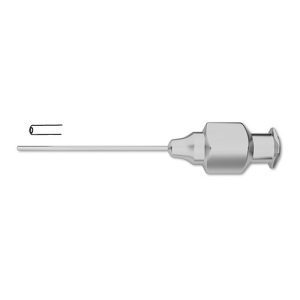
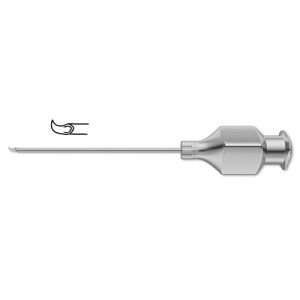


Reviews
There are no reviews yet.